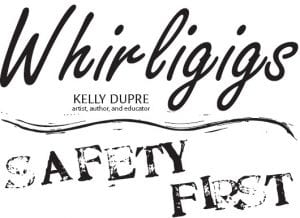When you think about being safe, what comes to mind? Perhaps crossing the street carefully and wearing a helmet when you ride your bike? Part of being safe means also feeling safe inside. You might do this by locking your doors, and not talking to strangers. Perhaps your parents have taught you what to do in case of an emergency? It’s true that you can’t stop all bad things from happening, but simple safety practices goes a long way toward prevention so it is worth the time and effort.
The three most important things to know
1. Know the safety rules and guides to follow at school, home and when you are on your own.
2. Know what to do in an emergency.
3. Make good choices when you’re in an unsafe situation.
For each person these guides will be different, so if you don’t know any of the above information, make sure you ask your teachers, parents and guardians to help you learn the information. Here are a few activities that will help you become familiar with all that you should know.
Emergency Phone Number List
On a clean sheet of paper, write down the phone numbers that might be needed in case of an emergency. Use the phone book to look up your local emergency number (usually 911), fire department, police, poison control, doctor, ambulance, parent or guardian’s work and cell phone numbers, relative or friend who could help if needed, neighbor.
Also write down your home phone number and address in case you forget them during an emergency. Decorate your list with crayons, markers, colored pencils or colored paper and hang it in a place next to the phone. If you have more than one phone in your house or everyone has cell phones, consider making several lists to put in different places.
Home Safety Check
This is a good activity for the whole family to be involved in. Check your house or apartment to see that it is as safe as possible. Check for things like smoke detectors, fire extinguishers, make sure medications, pesticides and cleaning fluids are out of reach of young children. Check the furnaces and water heaters each year. Can the doors and windows all be locked? Look around the house for other things that may be dangerous like matches in an unsafe location. If you have pets, is the living space safe for them as well?
This is the last of 10 articles inspired by the book What Do You Stand For… a Guide to Building Character for Kids by Barbara A. Lewis. This book is full of interesting stories about real kids and it contains many great activity ideas to help kids practice building the positive character traits of caring, citizenship, cooperation, fairness, forgiveness, honesty, relationships, respect, responsibility and safety.
Kelly Dupre of Grand Marais is an artist, children’s author, and educator with over 20 years teaching experience with all age groups in a variety of settings. The activities in this once-a-month column are spin-offs and combinations of ideas she has used and learned from teachers, parents, kids, books, and workshops. Only some of the activities has she actually thought of herself!



Leave a Reply